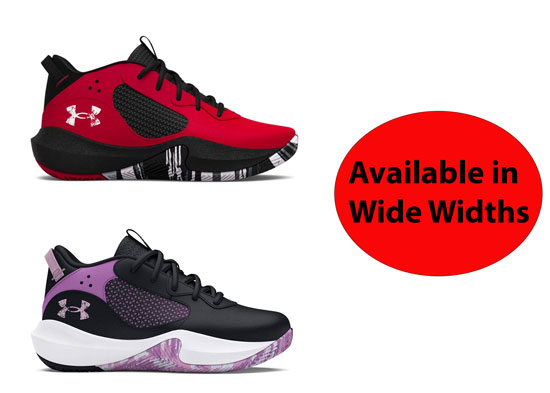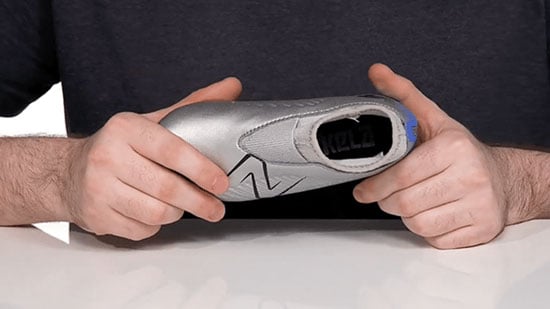How to Keep Young Athletes’ Feet Healthy – Try These Sport Specific Shoes in the Correct Size!
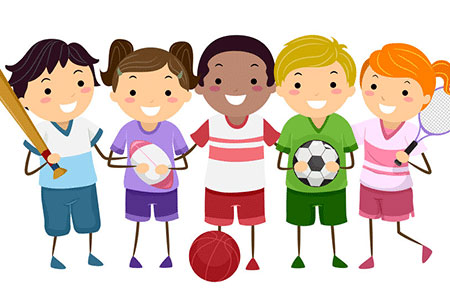
I am always emphasizing to parents the importance of taking care of their young athletes’ feet from an early stage. Regardless of your child’s sport, healthy feet help improve performance when running, jumping, accelerating, and changing directions. The best way to keep your young athletes’ feet healthy is by making sure your child wears the correct type of sport shoes in the correct size. Appropriate footwear is among the primary ways to avoid injuries!
Playing sports in the wrong type of shoes or the wrong shoe size can include injuries that impair growth, and may lead to long-term health problems.
Did you know that children who play sports are at a greater risk for injury than adults? Some children begin their competitive sports careers as early as age seven, while some others start as early as age four.
Your children’s bones, muscles, tendons, and ligaments are still growing, which makes them more susceptible to injury. Some of the more common injuries I have seen are plantar fasciitis and stress fractures, and blisters also can be an issue. All of these injuries and foot issues can be traced back to the athlete not having the correct footwear.
Since most specialized children’s shoe stores are closed now, I came up with a system to help parents determine their child’s exact foot shape —narrow, medium, wide, extra wide— as well as whether the child is flat-footed, has rolled ankles, and a high instep. These are all factors that help determine your child’s final shoe size.
How to Keep Young Athletes’ Feet Healthy – Figuring Out Your Child’s Foot Shape
1️⃣ Measure Your Child’s Exact Foot Length
➡️ Make sure that your child is standing straight, and then place a measuring tape or ruler below your child’s heels. You must measure your child’s feet while standing, as on weight-bearing the foot becomes longer.
➡️ Measure both feet up to the tip of your child’s longest toe (make sure that your child is not curling his/her toes). You must measure both feet since there is always one foot that is bigger than the other. Keep in mind that your child’s longest toe doesn’t necessarily have to be the big toe — it may in fact be the second or even the third toe.
➡️ Make a note of that measurement in centimeters or inches or email me the image showing the measurements (such as you see below) to avoid confusion with the measurements.

We will input your child’s foot measurements in the standard foot measuring tool (Brannock device) to retrieve your child’s exact foot length.
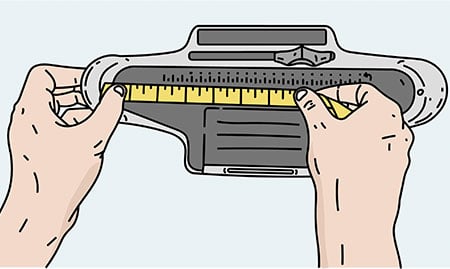
2️⃣ Pictures of Your Child’s Foot Width
The pictures below will help me determine whether your child has narrow, medium, wide, or extra wide feet. Also, the pictures will help me see whether your child has a high instep and additional information such as whether your child has flat feet or not. Below you can find examples of how the pictures should look like:
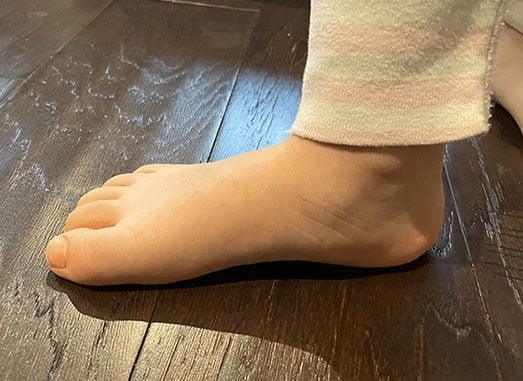
This image helps determine whether your child is flat footed and whether your child has a high instep or not.

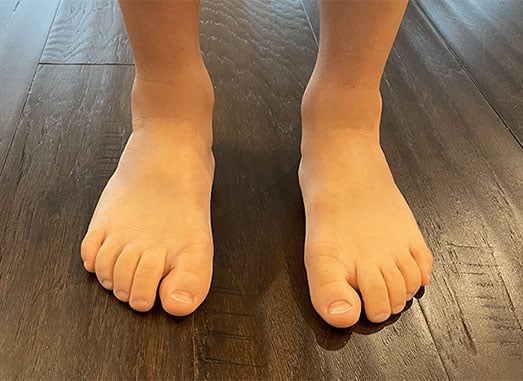
This image helps determine whether your child has narrow, medium, wide, or extra wide feet.
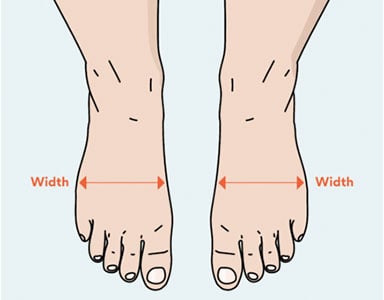
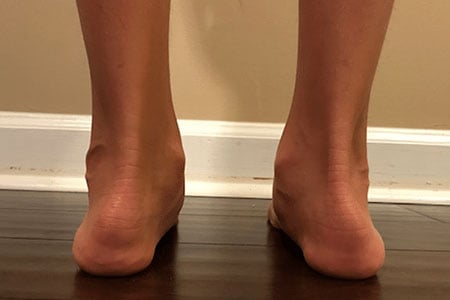
This image helps determine whether your child has rolled ankles or not.
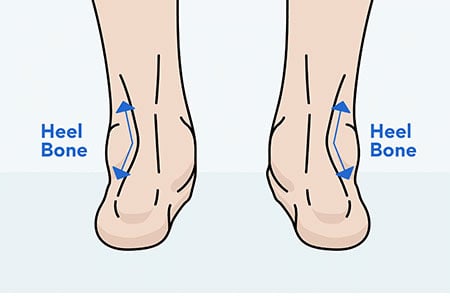
Please note that I won’t need the measurements of your child’s foot width, the images will be sufficient to help me determine whether your child has narrow, medium, wide, or extra wide feet.
Feel free to include in your email any additional information I should know about your child’s feet.
Recap – What to Include in Your Email
- Your child’s foot length measurements (or an image of their foot length measurements)
- Three images of your child’s feet (see example images above)
- The country you live in
You will then receive a response within 24 hours with your child’s exact foot length, shape, and specific shoe recommendations as needed.
How Much Does This Service Cost?
This service is completely free. I am passionate about fitting children’s shoes as I truly believe that the correct type of shoes can be life-changing. Children’s feet are constantly developing, and what happens to their feet during their childhood will affect their physique as they grow older.
If you wish to support the work of Fitting Children’s Shoes, you can Donate Here Your support helps ensure that families around the world can find the correct shoes for their children, regardless of their foot shape or condition.
Once you know your child’s exact foot size then you can start looking for your child’s sport shoes.
How to Find Sport-Specific Shoes for Your Child
I always emphasize to parents that they need to make sure they choose shoes that are designed for the sport. Believe me when I tell you that there is a reason why shoe companies make basketball shoes for basketball players, running shoes for runners, soccer cleats for soccer players, and baseball cleats for baseball players.
Your child’s sport shoes must provide sturdy heel counters and substantial outsoles to minimize the impact that your child’s feet take when they come in contact with the ground. Let me help you visualize the two most important features that your child’s sport shoes must provide.
1️⃣ Firm Heel Counters: The heel counter is the back part of the shoes and the firmer it is, the better. It’s important for your child’s sport shoes to provide targeted support right below the heels, as this helps cushion and protect your child’s ankles.
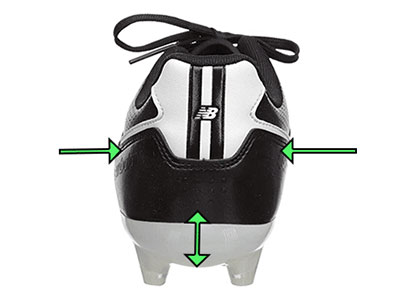
2️⃣ Substantial Outsoles: The outsole of your child’s sport shoes needs to be thick and supportive to reduce the friction between your child’s feet and the ground.

Where Can You Find Sport Shoes that Provide These Two Important Features?
I have written several other resources that describe the best soccer, basketball, baseball, football, and tennis shoes.
Final Thoughts on How to Keep Young Athletes’ Feet Healthy
Children younger than 8 years old, are less coordinated and have slower reaction times which makes them more prone to crashing against one another. It’s important to note children mature at different rates, and there might be considerable height and weight differences between children on the field. This can easily lead to an increased risk of injury.
Did you know that foot and ankle problems are the second most common musculoskeletal problem facing primary care physicians in children under 10 years of age next to acute injury?
Pay attention to the following risk factors as they can predispose your children to sport injuries:
- Wearing improper footwear.
- Pre existing-conditions such as flat feet and rolled ankles.
- Imbalance of strength or joint range of motion.
- Growth cartilage less resistant to repetitive microtrauma.
Now, when it comes to sport shoes, some might be more supportive than others. However, the most important thing you can do is to get your young athletes’ shoes in the correct size.
To keep your young athletes in the game long-term, I suggest that you make sure that your child wears the correct type of sport shoes in the correct size. Remember that most children’s injuries are caused by excessive and repetitive stress on immature muscle-bone units.
Please feel free to leave your feedback in the comments section below as other families may benefit from your input. Do not hesitate to contact me if your child plays a different sport or if you need further assistance in finding the correct pair of sport shoes for your child’s feet.


